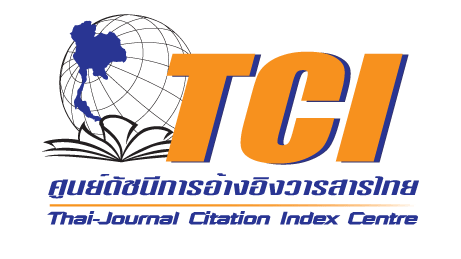ความชุกของอาการปวดเท้าของคนงานโรงพยาบาลศิริราช
Keywords:
ความชุก, ปวดเท้า, คนงาน, prevalence, foot pain, workerAbstract
The Prevalence of Foot Pain in Workers at Siriraj Hospital
Kanjanarai K, Chadchavalpanichaya N
Department of Rehabilitation Medicine, Faculty of Medicine Siriraj Hospital, Mahidol University
Objectives: To study the prevalence and concomitant factors of foot pain in workers at Siriraj Hospital.
Study Design: Descriptive cross-sectional study
Setting: Siriraj Hospital
Subjects: Workers who have been working at Siriraj Hospital more than 3 months.
Methods: From February to June 2010, using simple randomization, the 164 workers were recruited and interviewed by using questionnaires, which divided into 2 parts: the demographic data, and the foot pain along. Then a foot-and-shoe examination was conducted by a doctor.
Results: There were 67 males (40.9%) and 97 females (59.1%) with an average age of 40.7 years, average BMI of 24.4 kg/m2, and an average year of service of 11.2 years. Majority (67.1%) had no underlying diseases; and almost half of them (47%) did the cleaning as their main job. Most of them (95.7%) were required to stand or walk for around 8 hours a day. In addition, around one-third of them used Oxford-type shoes. Fifty-six workers (34.1%) had foot pain. Among these, the foot pain was mostly intermittent (98.2%) and bilateral (60.7%) . Twothird of them (66.1%) suffered from pain for over last 3 months with mild severity (55.3%) and mostly used topical medication to relieve their pain (66.1%) . Nearly everyone (89.3%) reported the pain affected their activities, especially with a long period of walking (85.7%) . The majority (73.2%) had no foot deformity. According to the shoe examination, 55.4% showed a worn-out area at lateral side with no detected shoe modification. Foot pain was significantly associated with years of working and type of job. The workers who had worked more than 10 years had a risk of foot pain 2.2 times higher than those who had worked less than 10 years (odds ratio=2.2). In addition, the workers who had the main job of lifting and transferring patients had a risk of foot pain 4.2 times higher than those having the main job of cleaning (odds ratio=4.2).
Conclusion: The prevalence of foot pain in workers at Siriraj Hospital was 34.1%. Most of them had mild degree of pain of both feet, disturbing walking duration. Working more than 10 years and lifting and transferring patients increased risk of foot pain.
บทคัดย่อ
วัตถุประสงค์: เพื่อศึกษาความชุกและปัจจัยที่มีผลต่อการเกิด อาการปวดเท้าของคนงานโรงพยาบาลศิริราช
รูปแบบการวิจัย: วิจัยเชิงพรรณา ณ ช่วงเวลาใดเวลาหนึ่ง
สถานที่ทำการวิจัย: โรงพยาบาลศิริราช
กลุ่มประชากร: คนงานที่ปฏิบัติงานในโรงพยาบาลศิริราชมาก กว่า 3 เดือน
วิธีการศึกษา: ตั้งแต่ กุมภาพันธ์ – มิถุนายน พ.ศ. 2553 สุ่ม ตัวอย่างจำนวน 164 คน จากลำดับรายชื่อคนงาน สัมภาษณ์ ตามแบบสอบถามเพื่อรวบรวมข้อมูลส่วนตัวและข้อมูลอาการ ปวดเท้า จากนั้นแพทย์ตรวจภาวะเท้าผิดรูปและประเมินสภาพ รองเท้า
ผลการวิจัย: ผู้ร่วมวิจัย เป็นชาย 67 คน (ร้อยละ 40.9) หญิง 97 คน (ร้อยละ 59.1) อายุเฉลี่ย 40.7 ปี ดัชนีมวลกายเฉลี่ย 24.4 กิโลกรัม/เมตร2 อายุงานเฉลี่ย 11.2 ปี ส่วนใหญ่ (ร้อยละ 67.1) ไม่มีโรคประจำตัว ร้อยละ 47 มีหน้าที่หลักคือทำความ สะอาด และร้อยละ 95.7 มีระยะเวลาที่ต้องยืนหรือเดิน 8 ชั่วโมง ต่อวัน ร้อยละ 31.7 ใส่รองเท้าหุ้มส้นชายเป็นประจำ คนงาน จำนวน 56 คน (ร้อยละ 34.1) ปวดเท้า ร้อยละ 98.2 มีอาการ ปวดเป็น ๆ หาย ๆ และร้อยละ 60.7 ปวดเท้าทั้ง 2 ข้าง ประมาณ 2 ใน 3 มีอาการมานานมากกว่า 3 เดือน และ ร้อยละ 55.3 มีระดับอาการปวดต่ำ ร้อยละ 66.1 รักษาเองโดยใช้ยาทาแก้ปวด ร้อยละ 89.3 มีผลกระทบจากอาการปวดเท้าโดยส่งผลกระทบ มากที่สุดทำให้ ร้อยละ 85.7 ไม่สามารถยืนหรือเดินต่อเนื่องเป็น ระยะเวลานาน ๆ ได้ ในกลุ่มคนงานที่มีอาการปวดเท้าพบว่า ร้อยละ 73.2 ไม่มีภาวะเท้าผิดรูป ทั้งในรายที่มีและไม่มีภาวะ เท้าผิดรูป ส่วนใหญ่ (ร้อยละ 55.4) มีรองเท้าสึกทางด้านนอก ทั้ง 2 ข้าง และไม่มีคนงานที่ได้รับการปรับรองเท้า คนงานที่มี ระยะเวลาปฏิบัติงานมากกว่า 10 ปี มีโอกาสเกิดอาการปวดเท้า เป็น 2.2 เท่าของคนงานที่มีระยะเวลาปฏิบัติงานน้อยกว่าหรือ เท่ากับ 10 ปี (odds ratio=2.2) และคนงานที่ทำหน้าที่ขนย้าย ผู้ป่วยมีโอกาสเกิดอาการปวดเท้าเป็น 4.2 เท่าของคนงานที่ทำ หน้าที่ทำความสะอาดเป็นงานหลัก (odds ratio=4.2)
สรุป: ความชุกอาการปวดเท้าในกลุ่มคนงานโรงพยาบาลศิริราช เท่ากับร้อยละ 34.1 ส่วนใหญ่มีอาการปวดเท้าทั้ง 2 ข้าง และมี ระดับความรุนแรงต่ำ ผลกระทบจากอาการปวดเท้ามากที่สุด คือทำให้ไม่สามารถยืนหรือเดินต่อเนื่องเป็นระยะเวลานาน ๆ ได้ และปัจจัยที่มีผลต่อการเกิดอาการปวดเท้าคือระยะเวลา ปฏิบัติงานในตำแหน่งคนงานและหน้าที่ประจำที่ทำบ่อยที่สุด





